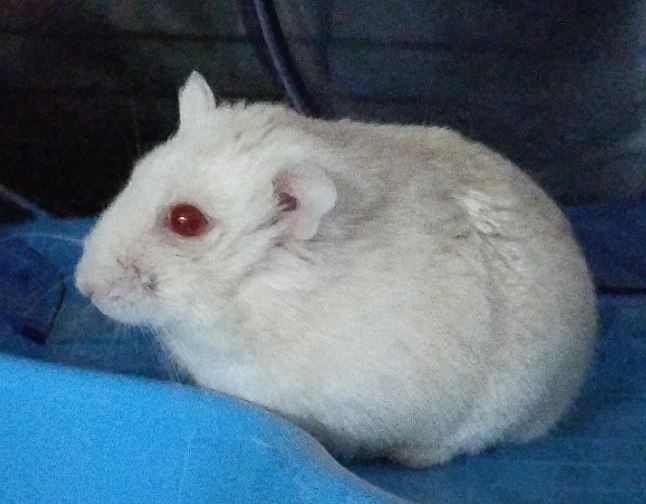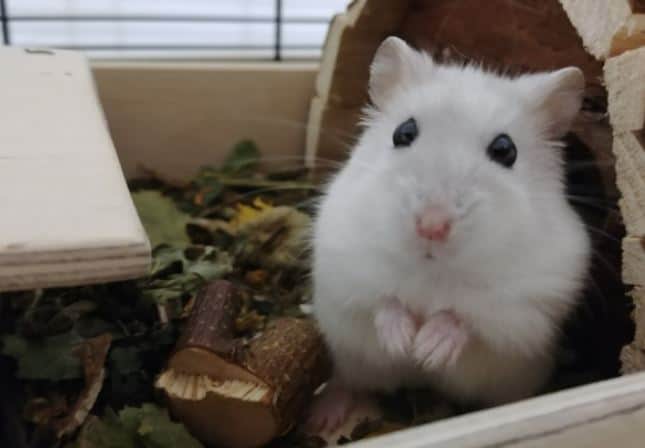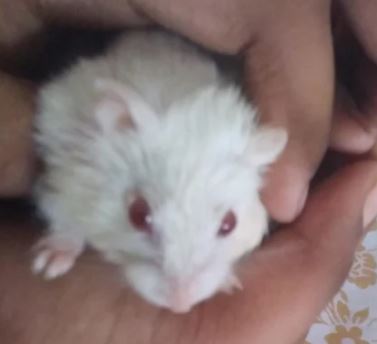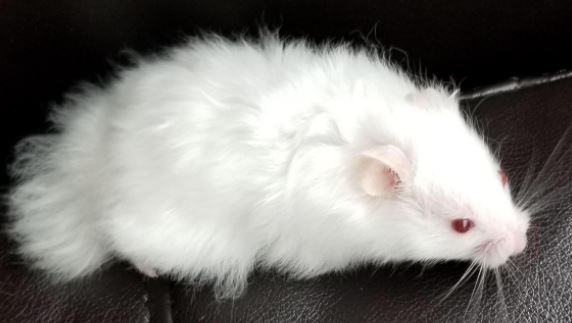There are many different kinds of hamsters, but one of the coolest-looking ones is the albino hamster. Albino hamsters, characterized by their red eyes and white fur, really stand out from the rest. However, while most people can agree that they look cool, many people have questions about this interesting phenomenon. For instance, you might be wondering whether or not it’s normal for albino hamsters to have red eyes, why they have red eyes in the first place, or even if the fact that they have red eyes means that they’re evil!
There are also some misconceptions about albino hamsters that I’d like to address. For instance, many people believe that all white hamsters are albino, but that’s not quite the case.
Today, I’m going to answer everything you’ve ever wanted to know about albino hamsters, so let’s dig in!
What are albino hamsters?

Albino hamsters are not very different from regular hamsters, they have the same care requirements, eat the same food, and generally behave in the same way. The only difference is in their appearance!
Albino hamsters are characterized by their white fur and red eyes. The reason why this occurs is because of a mutation in one of their genes which causes albinism. Albinism means that these hamsters have a significantly reduced amount of melanin or no melanin at all. Melanin is responsible for giving color to the hair and eyes, and since hamsters with albinism don’t have much (or any) melanin it means that they have white hairs and red eyes.
However, just because a hamster is white does not necessarily mean that they’re an albino. More on that later.
Are all white hamsters albino?
Definitely not. Albinism in hamsters is quite rare. Most white hamsters that you see are not albino’s. For instance, the winter white dwarf hamster is, as the name suggests, often white of color but it’s not an albino. Winter white hamsters have white hair, yes, but they lack the characteristic red eyes that a hamster needs to have in order to be classified as an albino. The same goes for many other hamsters that are naturally white in color.
There are also leucistic hamsters, they look quite similar to albino hamsters but instead of lacking pigmentation in their eyes AND their hair they only lack pigmentation in their hair. Because of this, hamsters with leucism are white in color but do not have red eyes and are therefore not albino.

So, while you might see hamsters with white coloration quite frequently they’re only an albino if their hair is white and they have red eyes. If they do not fulfill both of these criteria, they’re not albino hamsters.
Do the red eyes of albino hamsters mean they’re blind?

No, albino hamsters have red eyes, but that doesn’t mean that they’re blind. However, they do often have worse vision than regular hamsters. Especially when it comes to depth perception albinos often struggle. The reason for this is that pigmentation in the eyes is important for normal vision.
Of course, it’s possible for an albino hamster to be blind, but the same goes for any other hamster. If you have a blind albino hamster it’s not because of their albinism, but instead because of some other factor.
Are albino hamsters rare?
Yes, albino hamsters are very rare. Especially in the wild, you’d be hard-pressed to come across an albino hamster. The mutation itself is rare in the first place, but in the wild, albino hamsters struggle to survive. As previously mentioned, they usually have vision impairments and on top of that, their white color makes them stand out in their surroundings. This makes it hard for them to hide from predators which means that they, unfortunately, often end up as prey.
In captivity, albino hamsters are slightly more common because they do not have to worry about predators, but they’re still quite rare because the mutation that causes albinism doesn’t occur very frequently and is recessive. Because of these factors, it can be quite hard to find an albino hamster for sale. Not many breeders or pet shops have them available, so if you’re dead-set on having an albino hamster as a pet, it might take a while to find one.
Albino hamster lifespan
The lifespan of an albino hamster in captivity is the same as that of any other hamster at around 2 years.
Albinism causes slightly worse vision, the inability to hide from predators and exposure to the sun can be dangerous for them. However, this is only a concern for wild hamsters, not really for pet hamsters. Pet hamsters do not have to worry about predators because they’re kept safe by us humans so their inability to hide from predators and diminished eyesight does not lower their lifespan.
Are hamsters with red eyes evil?

No, of course not! Just because your hamster has a mutation that causes albinism and gives him red eyes does not mean that they’re evil. In fact, studies have shown that the opposite might be true and that animals with red eyes (albinos) are less aggressive than regular animals.
Caring for albino hamsters
Caring for albino hamsters is not very different than caring for a regular hamster. They eat the same food, have the same lifespan, and generally have the same requirements. If you know how to take care of a regular hamster, you know how to take care of an albino!
Albino hamsters need:
- A cage that is large enough (minimum 24 x 12 x 12 inches, bigger is better)
- An exercise wheel
- Nutritious food in a food bowl
- Bedding
- Fresh water in a water bottle
- Chew toys
- A hamster house (hideaway)
The only thing that you do really need to be careful of is that you keep your albino hamster away from the sun. Albino hamsters do not have pigment or melanin to protect them from the sun’s harmful rays and because of that, they can get sunburnt very easily.
- How Long Do American Eskimo Dogs Live? Important Factors and Care Tips - September 29, 2023
- Do American Bulldogs Need Grooming? Essential Tips and Care Guidelines - September 29, 2023
- Do Bengal Cats Enjoy Playing? Essential Tips for Keeping Them Active - September 29, 2023